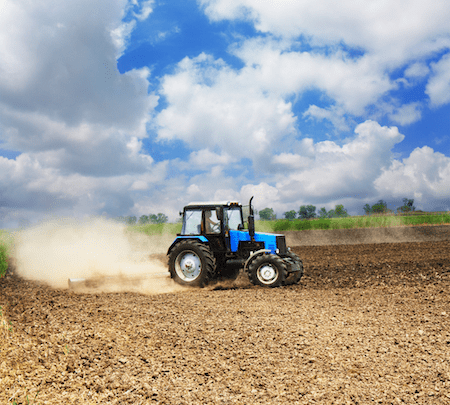Capital allowances are a useful form of tax relief for businesses that need to invest in expensive plant and machinery to operate successfully, including many farm enterprises.
There are a number of different types, but they all essentially fulfil the same function – to enable businesses to offset expenditure on plant and machinery against the profits of the business, either entirely or partially, to reduce the company’s tax burden.
To qualify for capital allowances, a business or individual must own the asset they are claiming against. Capital allowances cannot be claimed for plant of machinery that is hired and real care must be taken if they are being claimed for cars. However, these purchases are subject to a different set of rules, so it is always worth checking out the best way to manage them to maximise tax efficiency and cashflow.
Type of capital allowance
Currently, there are three types of capital allowance open to UK businesses. These include Annual Investment Allowance (AIA), Writing Down Allowance (WDA) and super capital allowance. Of these, AIA and super capital allowance are the most relevant to farmers.
Annual investment allowance
AIA was introduced in 2008 to enable businesses of any size and sector to claim tax relief on expenditure on plant and machinery. In January 2016, the level of relief was set at £200,000, enabling businesses to offset 100 per cent of an investment up to this amount.
However, to stimulate the economy the UK government increased AIA to £1m from January 2019 for a two-year period.
This was a welcome change for farmers, particularly given the large price tags tractors, combine harvesters and other farm machinery attracts, and provided significant tax efficiencies.
But from January 1st, 2022, AIA was set up to revert back to the original limit of £200,000, removing those extra tax breaks. However, in the recent budget, the £1m AIA was extended until March 31st, 2023.
This change would have disproportionately affected the farming community as the majority of farmers are sole traders and partnerships. As a result, they only qualify for AIA or WDA rather than other tax breaks open to limited companies.
By keeping the level at the £1m this has reduced the need for farmers to rush into purchases particularly whilst there are significant supply chain issues when ordering plant and machinery.
Super capital allowances
The picture is somewhat rosier for incorporated farm businesses, as these have access to super capital allowances when investing in plant and machinery.
Similar to the AIA allowances, super capital allowances were introduced to stimulate the post-COVID economy and incentivise investment in plant and machinery. Also, like AIA, they have been introduced on a temporary, two-year term, meaning qualifying farmers have until March 31st, 2023, to take advantage of them.
Super capital allowances are so-called because companies can offset up to 130 per cent of the cost of qualifying plant and machinery against profit. If therefore, for example, a company invests £1m in plant and machinery, under the super capital allowance regime it can deduct £1.3m from its taxable profit – a big saving.
Super capital allowances apply in year one (the same year the asset was purchased) and to qualify, the following criteria must be fulfilled:
- The business falls under the corporation tax regime – super capital allowances are not available to sole traders, partnerships, or LLPs.
- The contract for plant and machinery (including fixtures installed under a construction contract) was entered into after March 3rd, 2021, and the expenditure incurred after April 1st, 2021.
- The business must be purchasing new assets. Secondhand assets are treated in a different way.
- The asset must be owned by the business, not hired or leased.
Super capital allowance and hire purchase
Whereas super capital allowances can’t be claimed on hired or leased assets, it can be claimed on assets bought on hire purchase where the business owns the asset at the end of the term. This can also create significant cashflow benefits.
This is because super capital allowances apply in year one, whereas on a hire purchase agreement the expenditure in year one is only a fraction of the total cost of the plant or machinery. Therefore, the business benefits from the full tax relief long before the asset is fully paid for.
Another consideration is lead time, which can be lengthy on expensive plant and machinery, especially given the challenges of the past two years. To qualify for super capital allowance, the asset must be in use by the end of the basis period (the business’s financial year) in which it was ordered.
So, if you order a new tractor in August, your year end is October, and it isn’t due to be delivered until the following January, you will be unable to claim super capital allowance on that purchase until the following October year end.
For help, guidance, or support, get in touch
Negotiating the various types of capital allowance that are applicable to farming can appear difficult. But there are benefits to be had, particularly in the short term while the higher AIA threshold still applies, and the super capital allowance scheme is open, so it is worth considering.
If you would like any advice or guidance on the most tax efficient way of purchasing vital plant or machinery, contact Whitley Stimpson director and agricultural accountancy expert Ian Parker on (01295) 270200 or email IanP@whitleystimpson.co.uk.
Agricultural Spotlight
The article is covered in our Agricultural Spotlight – click the link to read the full magazine, which keeps farmers up to date with the latest accounting changes and challenges.
